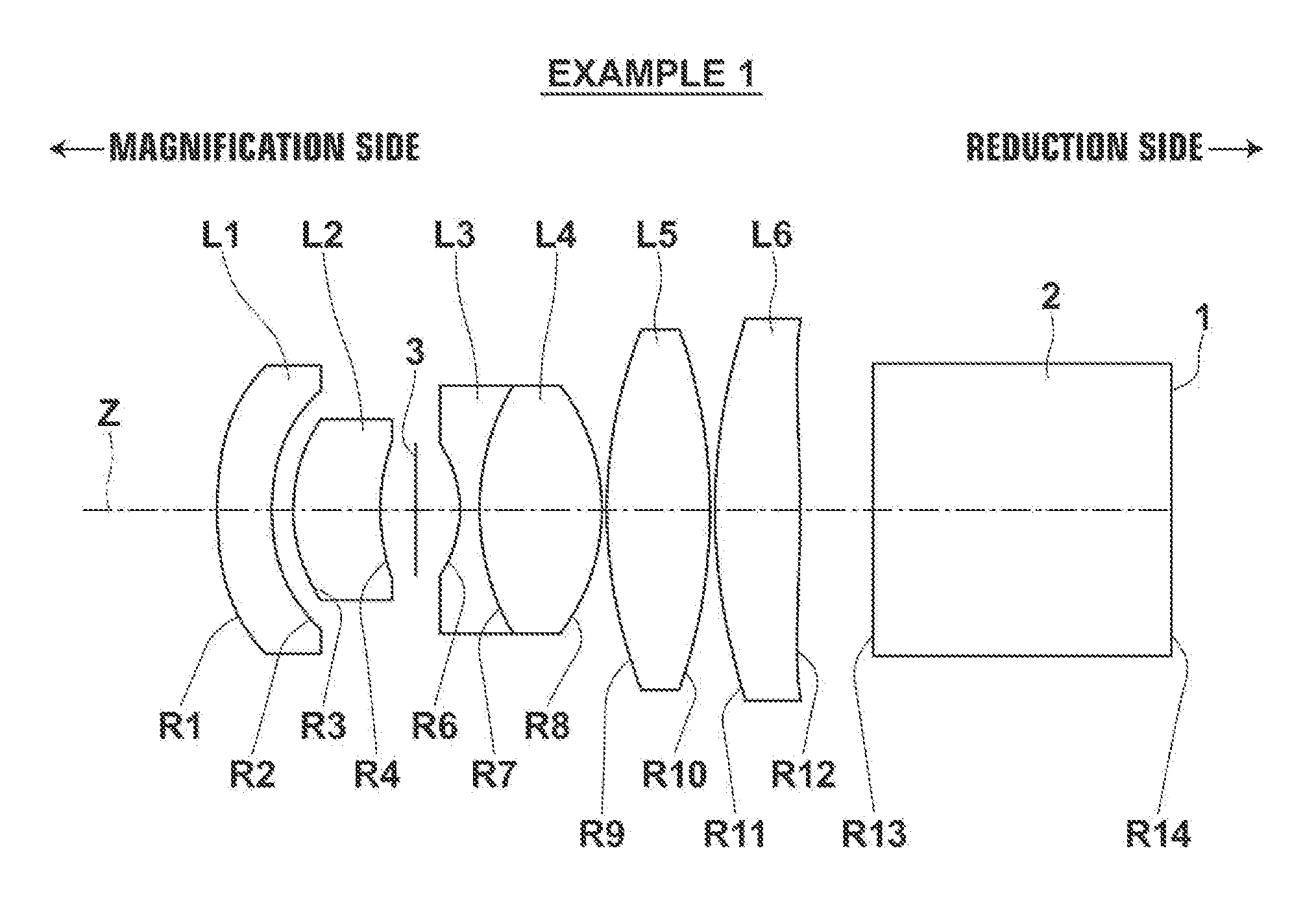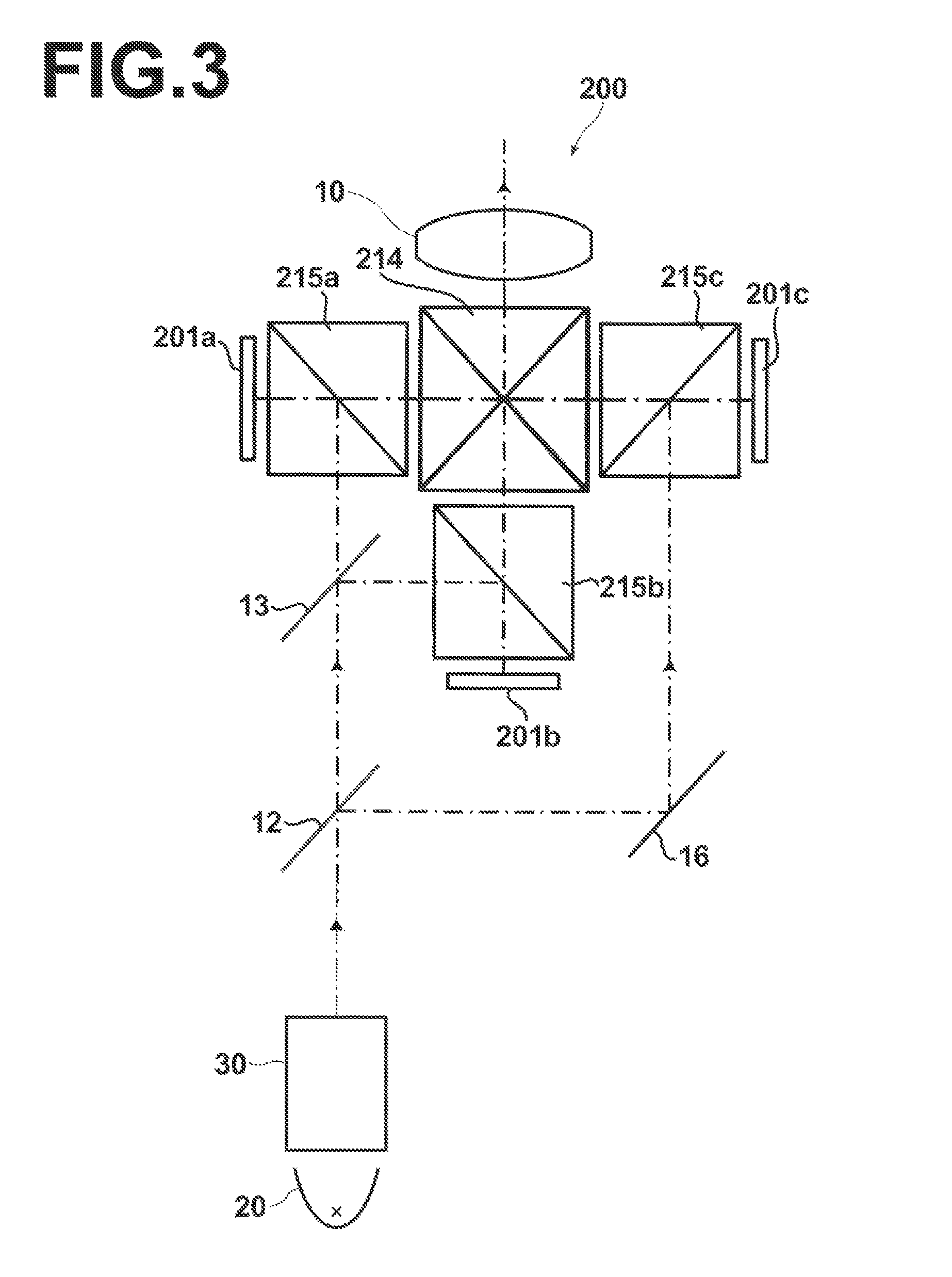Lens for projection and projection-type display apparatus
a projection type and display apparatus technology, applied in the field of projection type display apparatus, can solve the problems of long lens system not being able to cope with a request to achieve a wider angle of view, and the total length of the lens system is long. , to achieve the effect of excellent correction, small size and high performan
- Summary
- Abstract
- Description
- Claims
- Application Information
AI Technical Summary
Benefits of technology
Problems solved by technology
Method used
Image
Examples
example 1
[0100]FIG. 1 illustrates the lens structure of a lens for projection in Example 1. Since a main explanation of FIG. 1 has been described already, a part of the explanation will be omitted here.
[0101]The structure of the lens for projection in Example 1 will be outlined. The lens for projection in Example 1 consists of six lenses of first lens L1 in negative meniscus shape with its concave surface facing a reduction side in a paraxial region, second lens L2, which is a positive meniscus lens with its concave surface facing the reduction side, third lens L3, which is a biconcave lens, fourth lens L4, which is a biconvex lens, fifth lens L5, which is a biconvex lens, and sixth lens L6 in biconvex shape in a paraxial region. Further, the lens for projection is structured so that the reduction side is telecentric. Third lens L3 and fourth lens L4 are cemented together. Both surfaces of first lens L1 and both surfaces of sixth lens L6 are aspherical. A stop 3 is arranged between second le...
example 2
[0114]FIG. 7 is a diagram illustrating the lens structure of a lens for projection in Example 2. The schematic structure of the lens for projection in Example 2 is similar to that of the lens for projection in Example 1. In Example 2, optical members 2a, 2b are used instead of the optical member 2 in Example 1. Table 3 and Table 4 show basic lens data and aspherical surface coefficients of the lens for projection in Example 2, respectively. FIG. 8, Sections A through D illustrate aberration diagrams of the lens for projection in Example 2.
[0115]
TABLE 3EXAMPLE 2 BASIC LENS DATASiRiDiNdjνdj 0 (SCR)∞67.63 1*43.5040.151.491057.6 2*0.8840.05 30.6600.271.846723.8 41.3810.23 5 (St)∞0.20 6−0.4170.051.784726.3 71.3600.431.651658.5 8−0.7550.01 92.6420.341.772549.610−1.4960.0111*4.0540.221.491057.612*−2.6990.2613∞1.491.846723.814∞0.081.516364.115∞
[0116]
TABLE 4EXAMPLE 2 ASPHERICAL SURFACE COEFFICIENTSURFACENUMBERKA3A4A5A6 11.00000.0000E+002.3142E+00−4.3386E+002.7167E+00 21.00000.0000E+002.1512E...
PUM
 Login to View More
Login to View More Abstract
Description
Claims
Application Information
 Login to View More
Login to View More - R&D
- Intellectual Property
- Life Sciences
- Materials
- Tech Scout
- Unparalleled Data Quality
- Higher Quality Content
- 60% Fewer Hallucinations
Browse by: Latest US Patents, China's latest patents, Technical Efficacy Thesaurus, Application Domain, Technology Topic, Popular Technical Reports.
© 2025 PatSnap. All rights reserved.Legal|Privacy policy|Modern Slavery Act Transparency Statement|Sitemap|About US| Contact US: help@patsnap.com



